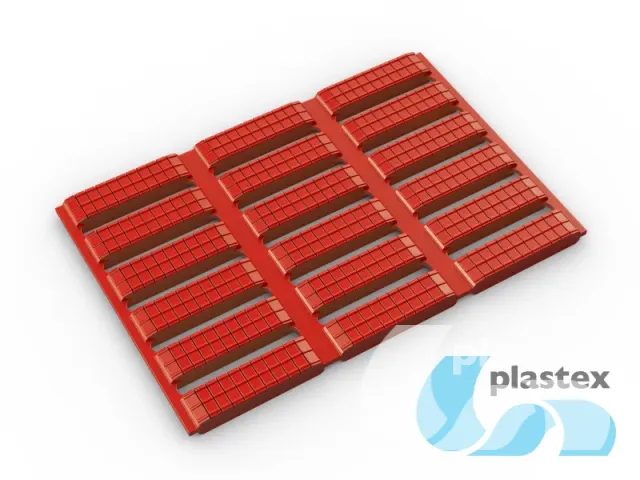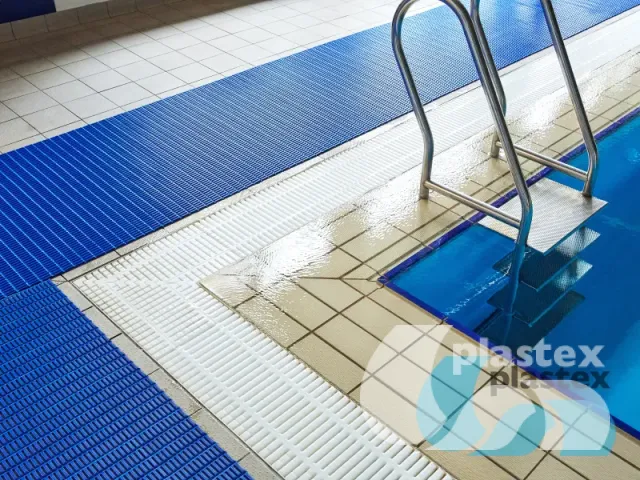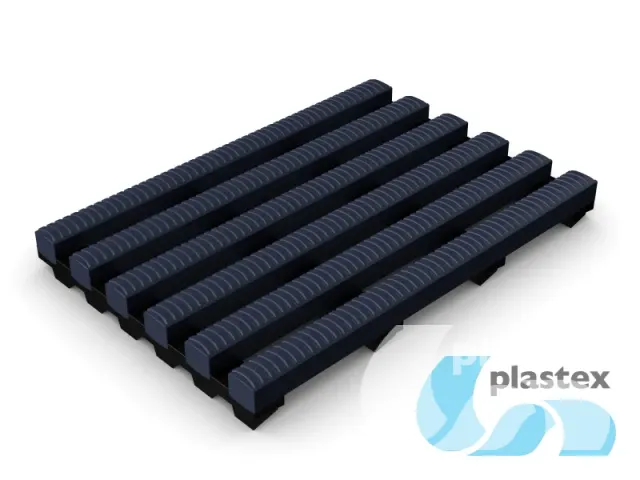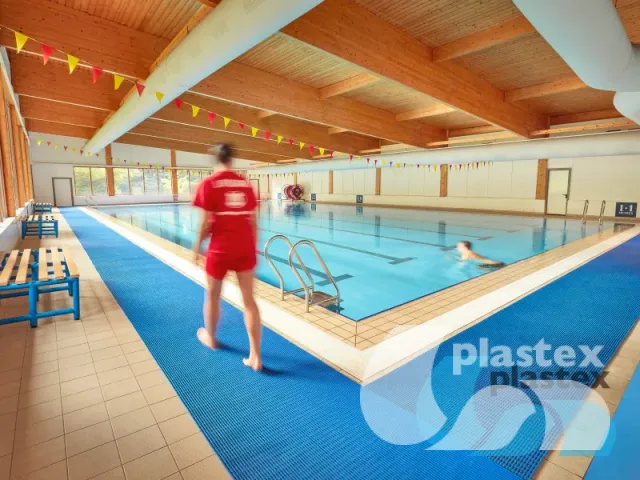
Choosing the right access mats for slip-prone environments
Need accessibility equipment in your workplace? Our access mats provide safe surfaces for wheelchair users and pedestrians in slip-prone settings.
What is an access mat?
Access mats make environments safer for people with accessibility needs and disabilities, pedestrians, and those facing temporary mobility challenges while recovering from injuries.
Access mats provide a slip-resistant, stable surface that helps people navigate challenging environments. They lessen the risk of falling, slipping, or getting their wheeled mobility aids stuck or damaged. Not only are they designed to support those that need assistance, but also the person or business providing care.
Where can access mats be installed?
Wet environments
Pools and changing areas need solid underfoot surfaces like tiles or decking, but these surfaces are hazardous when wet, and become uncomfortably hot to walk on when exposed to direct sunlight.
Wheelchair access mats improve safety for wheelchair users, pedestrians, and those recovering from surgery or injuries. Walkways for wheelchairs also reduce falls and slip-related accidents at facilities and venues where water is present.
Dry environments
Access mats don’t just make wet environments safer; wheelchair access mats also help to stabilize muddy or sandy environments, as well as gravel pathways. This helps prevent skidding or slipping in leisure environments that may become slick with sunscreen and spilled drinks.
The following wet environments can be made safer with access mats:
Swimming pools (inside and outside)
Aquatic disability pool lifts
Hospitals and rehab centres
Waterparks
Resorts
Bathing areas
Schools and universities
Boat decks, boardwalks and splash pads
What benefits do Plastex access mats provide?
Benefit #1: They help prevent injury
Our access mats create safer transition environments, so those with accessibility needs can easily go from their wheelchair to a disability lift or chair. A non-slip access mat gives careers peace of mind that they can safely support wheelchair users while helping with the transition.
Benefit #2: They make surfaces more comfortable
When installed at recreation centres and pools, access mats provide comfort and heat protection for those sitting or standing around the edge of the pool. Beach access mats are used to protect bare feet from hot tiles, sand, paving, or decking.
Benefit #3: They deliver long lasting hygiene
A hard-wearing access mat with antifungal and antimicrobial properties will repel mold and bacterial growth before it develops, delivering long lasting hygiene – even in wet or humid conditions.
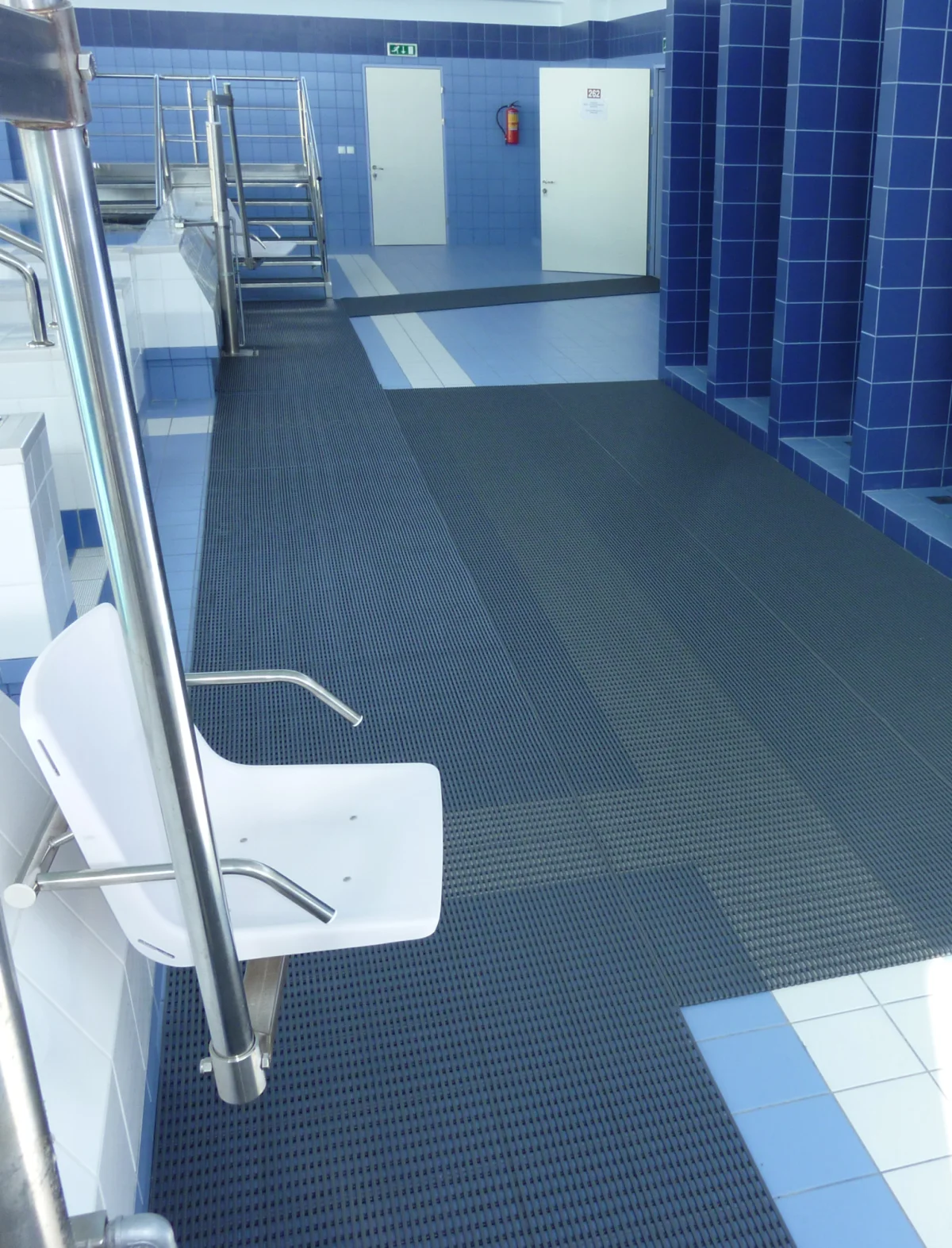
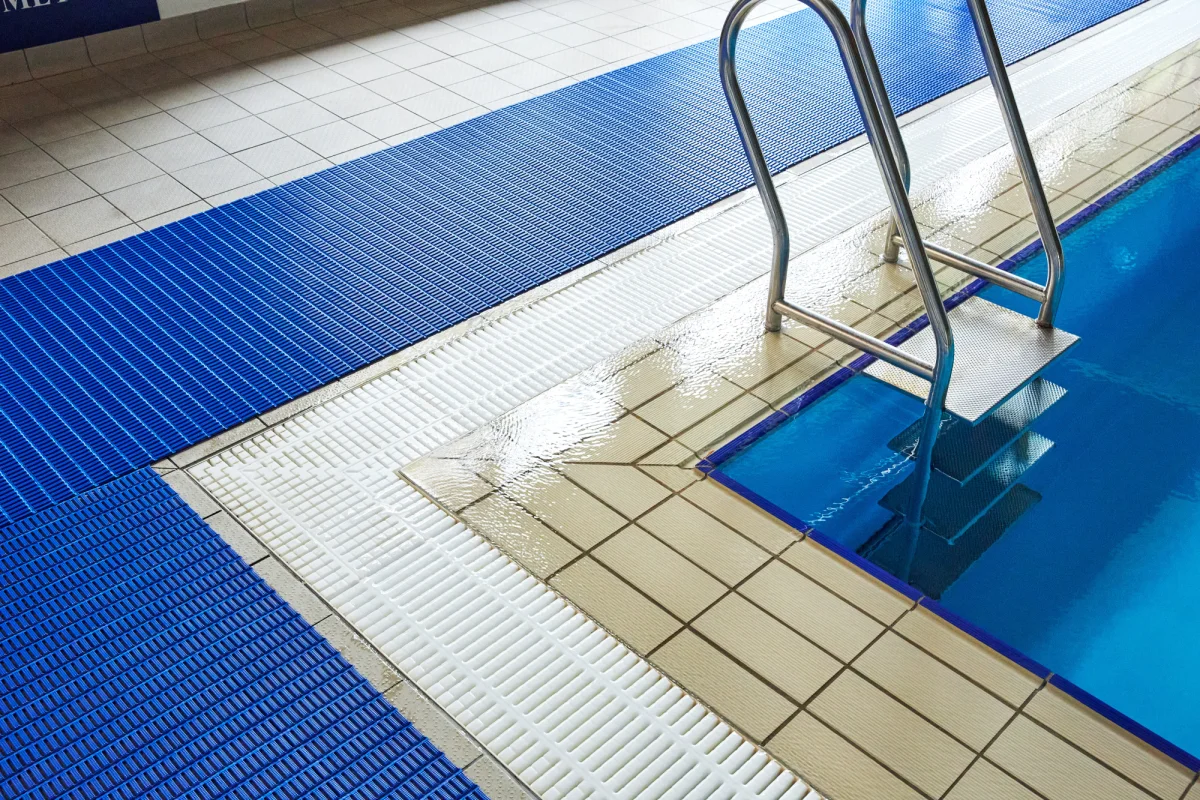
Benefit #4: They’re a long term safety solution
Organizations and facilities that invest in our high performance, fit-for-purpose wheelchair access mats, will benefit from slip-resistant surfaces that will help wheelchair users and careers for many years to come – even in the most demanding environments.
Benefit #5: They save time and money
Our access mats are simple to install – simply roll out and cut to fit on site. They can be quickly moved as needed, and easily adapted for any accessibility requirements. Their non-porous and lightweight construction makes cleaning a breeze for staff and contractors.
What to look for in an access mat
Ask your salesperson these three key questions:
- Is it easy to install?
Hospitals, recreation areas and bathing facilities often can’t close for contractors to fix their surface solutions, so it’s important to find access mats that make installation quick and easy. Choosing a mat made from a flexible, lightweight material means that walkways for wheelchairs can be quickly rolled out and cut to fit on site without any special skills or tools.
- How long will it last?
Wheelchair access mats should be able to withstand challenging environments both indoors and outside without fading, cracking, or facing detrimental damage. It’s important to consider the mat’s surroundings, and find accessibility equipment made from a durable material that’s resistant to harsh elements like direct sunlight and both pool and cleaning chemicals – and it’s vital you ask your supplier about the mat’s warranty.
- Will it get hot being out in the sun?
If your access mat will be exposed to direct sunlight at a beach, by a pool, or at a pier, you’ll need to consider heat absorption. A raised structure will help keep feet off hot tiles, sand, or boards by acting as a thermal barrier. This kind of access mat is far safer for children and students to sit on at swimming classes, training, or at competitions.
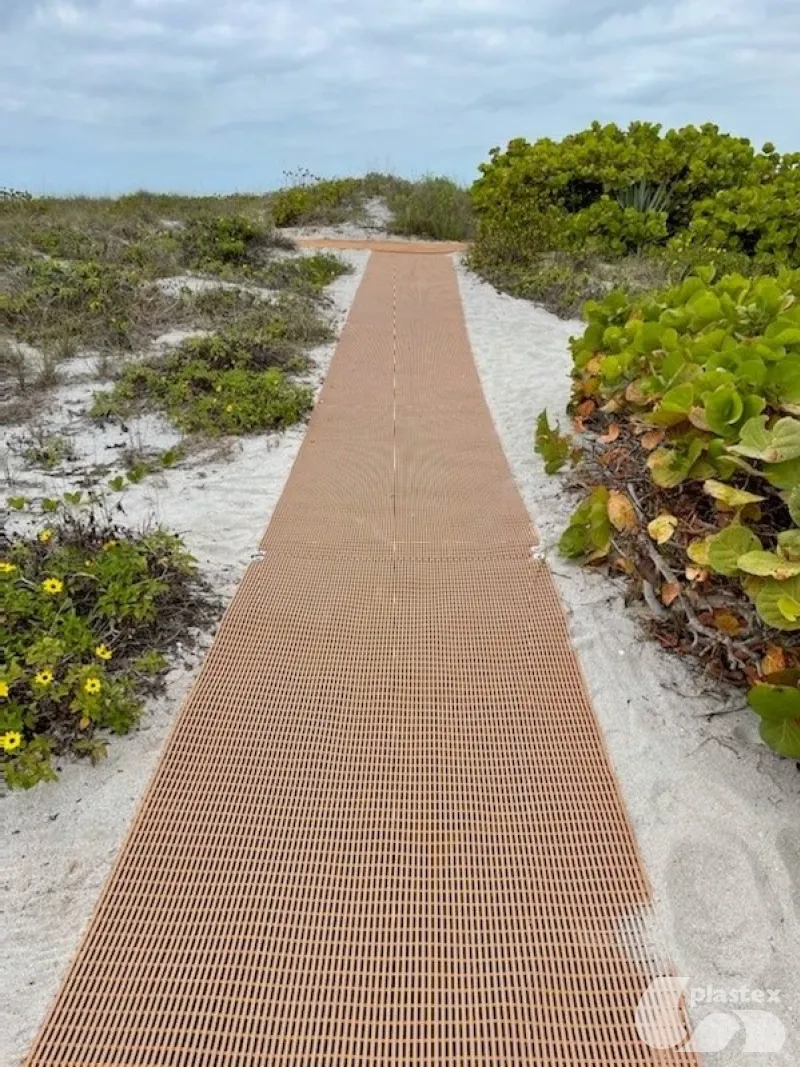
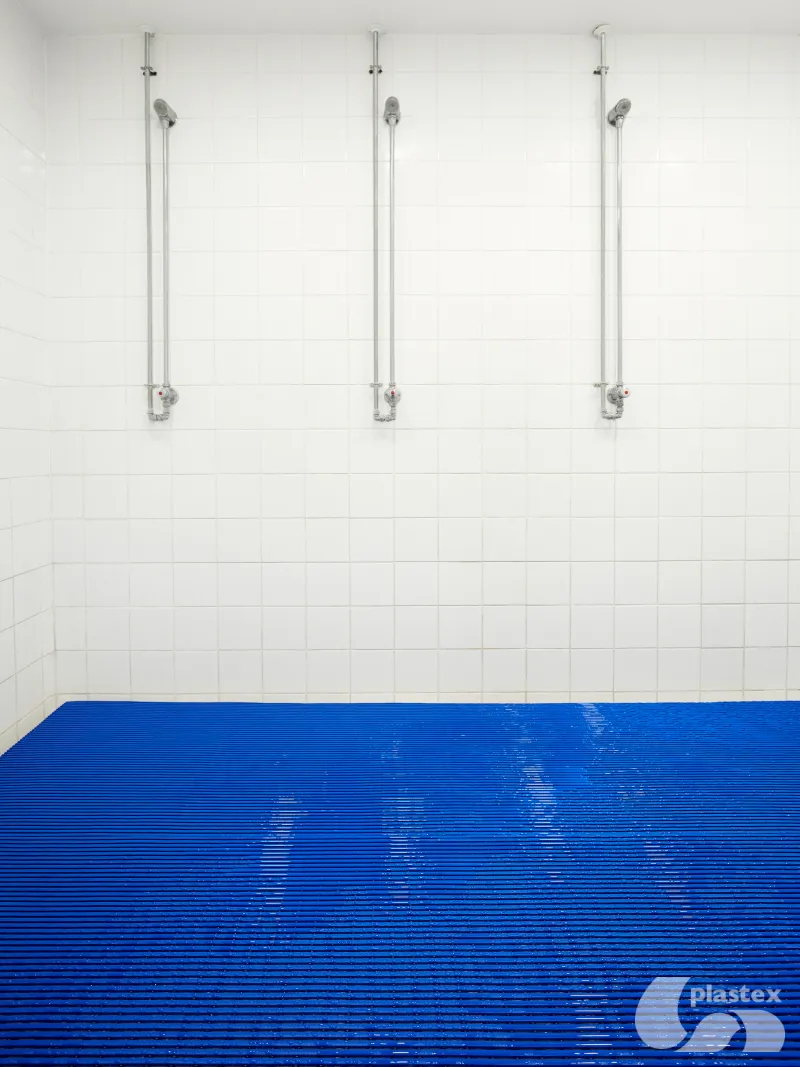
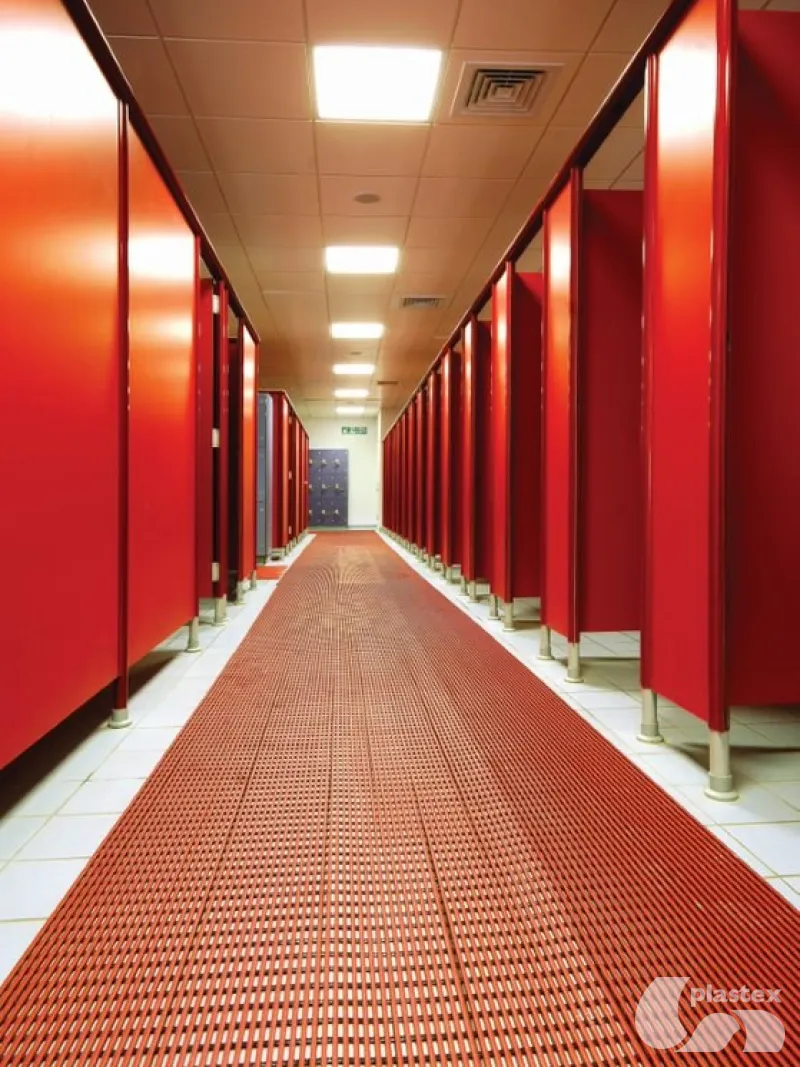
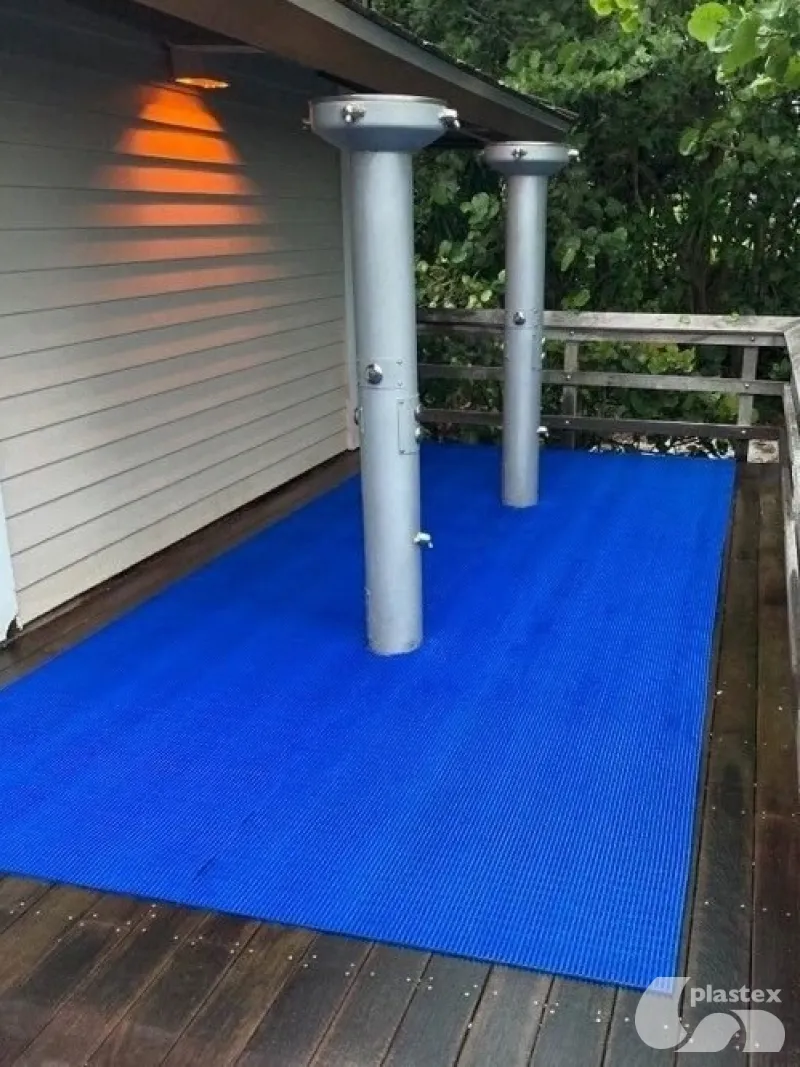
Our sales team recommend:
We’re here to help
As suppliers of access mats to some of the world’s leading hospitals, swimming centres, gyms, and leisure centres, we’ll help you find the right safety solution for your facilities.
